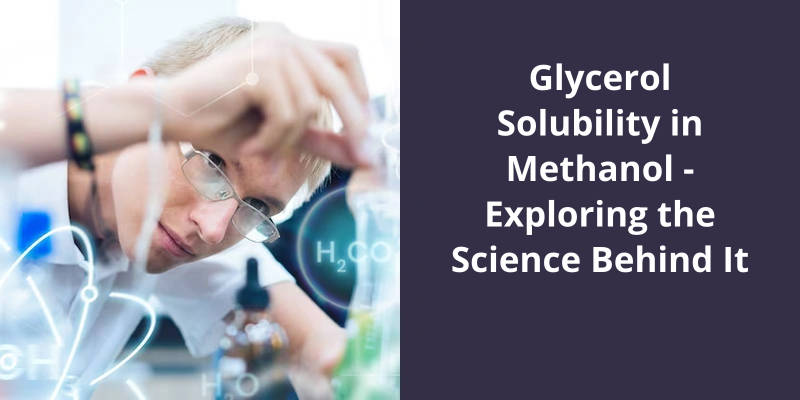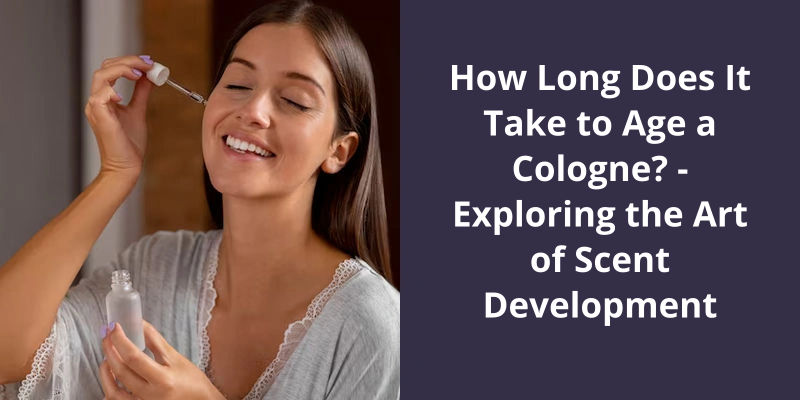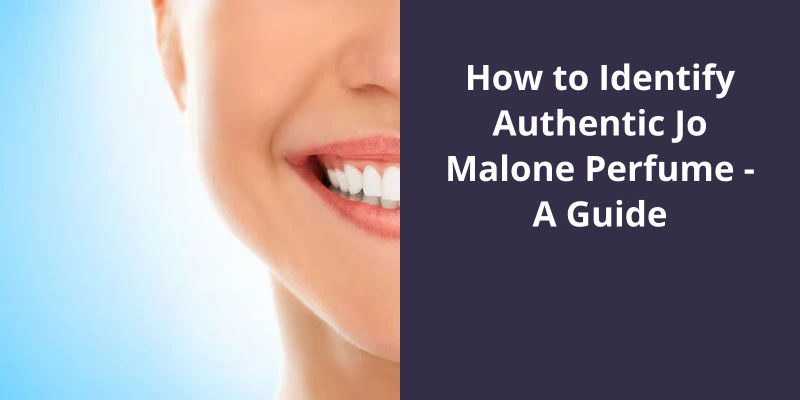Methanol is known to be completely soluble in glycerin, forming a homogeneous mixture. Moreover, methanol plays a crucial role in reducing the density difference between glycerin and methyl esters, leading to improved mixing and homogeneity.

Does Glycerol Dissolve in Methanol?
Glycerol solubility in methanol is an intriguing topic with implications in various scientific fields. Figure 1 and Figure 2 illustrate the fascinating relationship between FAME (fatty acid methyl ester) and methanol, as well as glycerol and methanol. However, when it comes to glycerol and FAME, their solubility in each other is only partial.
This disparity in solubility can lead scientists to delve further into the intricacies of the molecular interactions between these compounds.
Factors such as temperature, pressure, and molecular structure can influence the degree of solubility. These findings help in designing efficient separation techniques and optimizing industrial processes.
Glycerol, a byproduct of the transesterification process, can accumulate during the production of biodiesel. Finding effective ways to dissolve glycerol in methanol plays a significant role in refining biodiesel production methods and maximizing fuel yield.
This knowledge is essential for advancing scientific research, optimizing industrial processes, and addressing practical problems.
The study investigated the reaction between glycerol and methanol, focusing on the methanol-to-glycerol ratios and reaction time as variables. Experimental results showed that the reactions involved the process of etherification, dehydration, and thermal decomposition of glycerol. Further analysis and discussion regarding these reactions will be presented in the following sections.
Does Glycerol React With Methanol?
Glycerol, also known as glycerin, is a common compound used in various industries such as pharmaceuticals, cosmetics, and food production. One interesting aspect of glycerol is it’s solubility in different solvents, including methanol. However, the question arises: does glycerol react with methanol?
To explore this, scientists conducted experiments with different methanol-to-glycerol molar ratios and varying reaction times. The molar ratios were varied from 3:1 to 9:1, indicating an excess of methanol in all cases. Simultaneously, the reaction time ranged from 8 minutes to 12 minutes.
The results of these experiments revealed that the reactions between glycerol and methanol involved three main processes: etherification, dehydration, and thermal decomposition of glycerol. Etherification refers to the formation of ethers, compounds derived from alcohol, which explains the presence of glycerol ethers in the reaction mixture.
Dehydration, on the other hand, involves the removal of water molecules from the glycerol structure. This may result in the formation of alkanes or other byproducts. Lastly, thermal decomposition refers to the breaking down of glycerol molecules under the influence of heat, which can lead to the production of various volatile compounds.
These observations suggest that the reaction between glycerol and methanol is complex, involving multiple pathways. The exact mechanism and kinetics of these reactions would require further investigation. It’s also worth noting that these observations were made under specific experimental conditions, and the results may vary under different circumstances.
It provides insights into the potential chemical transformations that can occur when these two compounds come into contact. This knowledge can be utilized in the development of new processes and optimization of existing ones in industries where glycerol and methanol are commonly used.
Effects of Different Catalysts on the Reaction Between Glycerol and Methanol
The reaction between glycerol and methanol is influenced by the presence of various catalysts. Catalysts are substances that increase the rate of a chemical reaction without being consumed in the process. Different catalysts can impact the reaction differently, altering the outcome and efficiency.
For example, certain acid catalysts, such as sulfuric acid or hydrochloric acid, can enhance the reaction between glycerol and methanol by providing protons that facilitate the formation of glycerol ethers. These catalysts can improve the solubility of glycerol in methanol, resulting in better conversion and yield.
On the other hand, other catalysts like bases (e.g., sodium hydroxide) may interfere with the reaction or generate unwanted by-products, decreasing it’s efficiency. The choice of catalyst depends on the desired outcome and the specific conditions of the reaction.
Additionally, alternative methods for separating methanol from glycerol have been explored. In a study by Liang et al. (2010), it was found that high methanol content in crude glycerol can be effectively eliminated by diluting the crude glycerol sample with water and passing it through a 0.2 μm filter. This method offers a promising solution for removing methanol without the need for vacuum distillation.
How Do You Separate Methanol From Glycerol?
When it comes to separating methanol from glycerol, vacuum distillation is commonly used as a method. However, there are alternative approaches available that can effectively remove high methanol content from crude glycerol. One such method involves diluting the crude glycerol sample with water at a ratio of 10 times and then passing it through a 0.2 μm filter.
By diluting the crude glycerol and passing it through the filter, the methanol is effectively separated from the glycerol, resulting in a purified glycerol product.
The reason behind the effectiveness of this method lies in the solubility of glycerol in methanol.
The next step, passing the diluted sample through a 0.2 μm filter, further aids in the removal of methanol. The filter is able to capture the methanol particles, leaving behind a glycerol solution that’s devoid of methanol.
Other Methods for Separating Methanol From Glycerol: In Addition to Vacuum Distillation and Dilution With Water and Filtration, Are There Any Other Methods That Can Effectively Separate Methanol From Glycerol?
Yes, there are other methods that can effectively separate methanol from glycerol apart from vacuum distillation and dilution with water and filtration. One of these methods is membrane separation, which involves using a semi-permeable membrane to selectively separate the two substances based on their molecular size and properties. Another method is solvent extraction, where a specific solvent is used to extract the methanol from the glycerol. These alternative methods offer different advantages and can be used depending on the specific requirements of the separation process.
Source: Crude Glycerol Phase – an overview | ScienceDirect Topics
Glycerol, also known as glycerin, exhibits a notable solubility in various alcohols and organic solvents. Ethanol, being a common alcohol, is no exception to this property. Ethanol has the ability to dissolve glycerol effectively, showcasing remarkable compatibility between the two substances.
Can Ethanol Dissolve Glycerol?
Glycerol, a colorless and odorless liquid, is widely known for it’s solubility in various substances. When it comes to it’s solubility in alcohol, specifically ethanol, it’s important to note that glycerol exhibits great compatibility with alcohols and organic solvents. Ethanol, as a primary alcohol, is no exception to this.
Both glycerol and ethanol possess hydroxyl functional groups (-OH), allowing for intermolecular hydrogen bonding between the two molecules. This hydrogen bonding enables the dissolution of glycerol molecules in ethanol, resulting in a clear and uniform solution.
The Solubility of Glycerol in Other Alcohols and Organic Solvents
- Ethanol
- Isopropanol
- Methanol
- Acetone
- Ethyl acetate
- Diethyl ether
- Chloroform
- Toluene
- Xylene
- Hexane
Now, let’s delve deeper into each step of the GtM process to understand how glycerol is converted into methanol.
How Is Methanol Produced From Glycerol?
The glycerol-to-methanol (GtM) process provides an innovative solution for the conversion of glycerol into methanol, a valuable fuel and chemical precursor. This process involves the integration of two distinct processes: reforming in supercritical water (RSCW) of glycerol to syngas, followed by the conversion of syngas into methanol.
The syngas obtained from the RSCW process is then further processed to produce methanol. This second step involves the conversion of syngas through catalytic reactions, typically using metal catalysts such as copper or zinc. The CO and H2 present in the syngas react to form methanol according to the methanol synthesis reaction.
Firstly, it provides a valuable pathway for the utilization of glycerol, a byproduct generated in large quantities from biodiesel production. By converting glycerol into methanol, this process allows for the valorization of glycerol and contributes to the sustainability of the biodiesel industry.
Additionally, methanol is a versatile compound that finds wide applications as a fuel, solvent, and chemical intermediate.
Researchers continue to explore novel catalysts, reaction conditions, and process configurations to enhance the efficiency and selectivity of the conversion. By delving deeper into the complexities of glycerol solubility in methanol and the underlying reaction mechanisms, scientists aim to unlock the full potential of this process for industrial-scale methanol production.
Comparison of the Glycerol-to-Methanol Process With Other Glycerol Utilization Methods
- Direct conversion of glycerol to methanol
- Glycerol esterification to produce biodiesel
- Glycerol hydrogenolysis to produce propanediols
- Conversion of glycerol to glycerol carbonate
- Glycerol fermentation to produce value-added chemicals
- Glycerol pyrolysis to produce bio-oil
- Glycerol oxidation to produce valuable intermediates
- Glycerol conversion to polyols
Glycerol, a versatile compound with various applications, exhibits solubility in a range of solvents. While glycerol readily dissolves in water, it’s limited solubility in several organic solvents including acetone, chloroform, and diethyl ether. This characteristic highlights glycerol’s unique behavior and compatibility in different solvent systems.
Which Solvents Did Glycerol Dissolve In?
Glycerol, a colorless and viscous liquid, is known for it’s mild sweet taste, reminiscent of artificial sweeteners. At room temperature, it remains odorless and possesses unique solubility properties. Although it exhibits solubility in water, it’s compatibility with various organic solvents is limited. Solvents such as acetone, chloroform, and diethyl ether struggle to dissolve glycerol efficiently, leading to it’s poor solubility in these substances.
However, the solubility of glycerol in methanol presents an interesting exploration to delve deeper into the science behind it. Methanol, also known as wood alcohol, is a polar solvent that boasts several desirable characteristics.
Methanols polar nature arises from it’s oxygen-hydrogen bond, enabling it to form hydrogen bonds with glycerol molecules. These intermolecular forces of attraction facilitate the dissolution process and allow glycerol to disperse evenly throughout the methanol solvent.
The pharmaceutical industry, for instance, utilizes this solvent combination for the production of medicines and pharmaceutical formulations. Additionally, glycerols solubility in methanol plays a crucial role in the creation of personal care products, such as lotions and creams, where it serves as a moisturizing agent.
By exploring this phenomenon, scientists can further enhance the development of innovative solutions and applications in various fields, ultimately benefiting industries and consumers alike.





